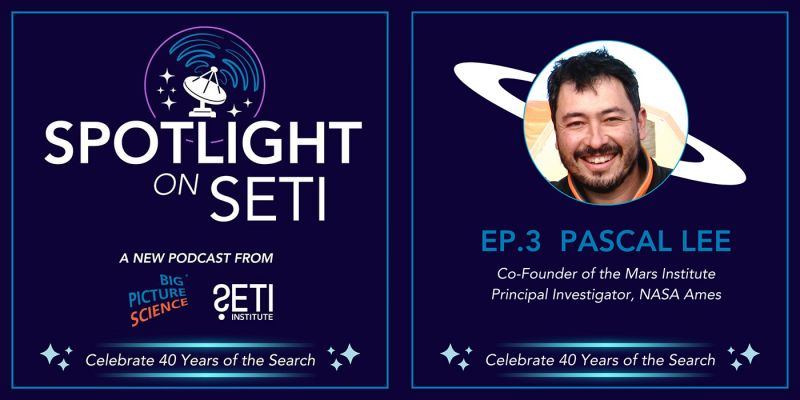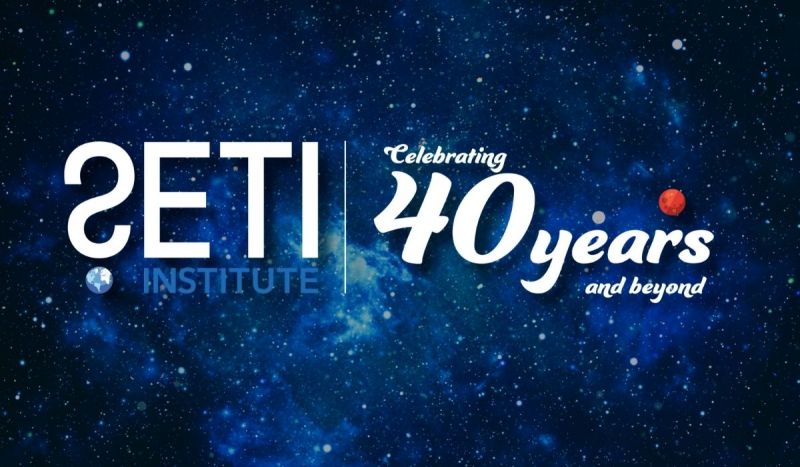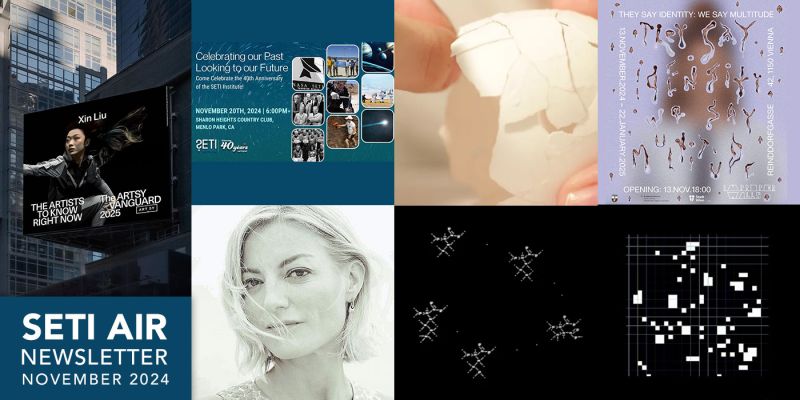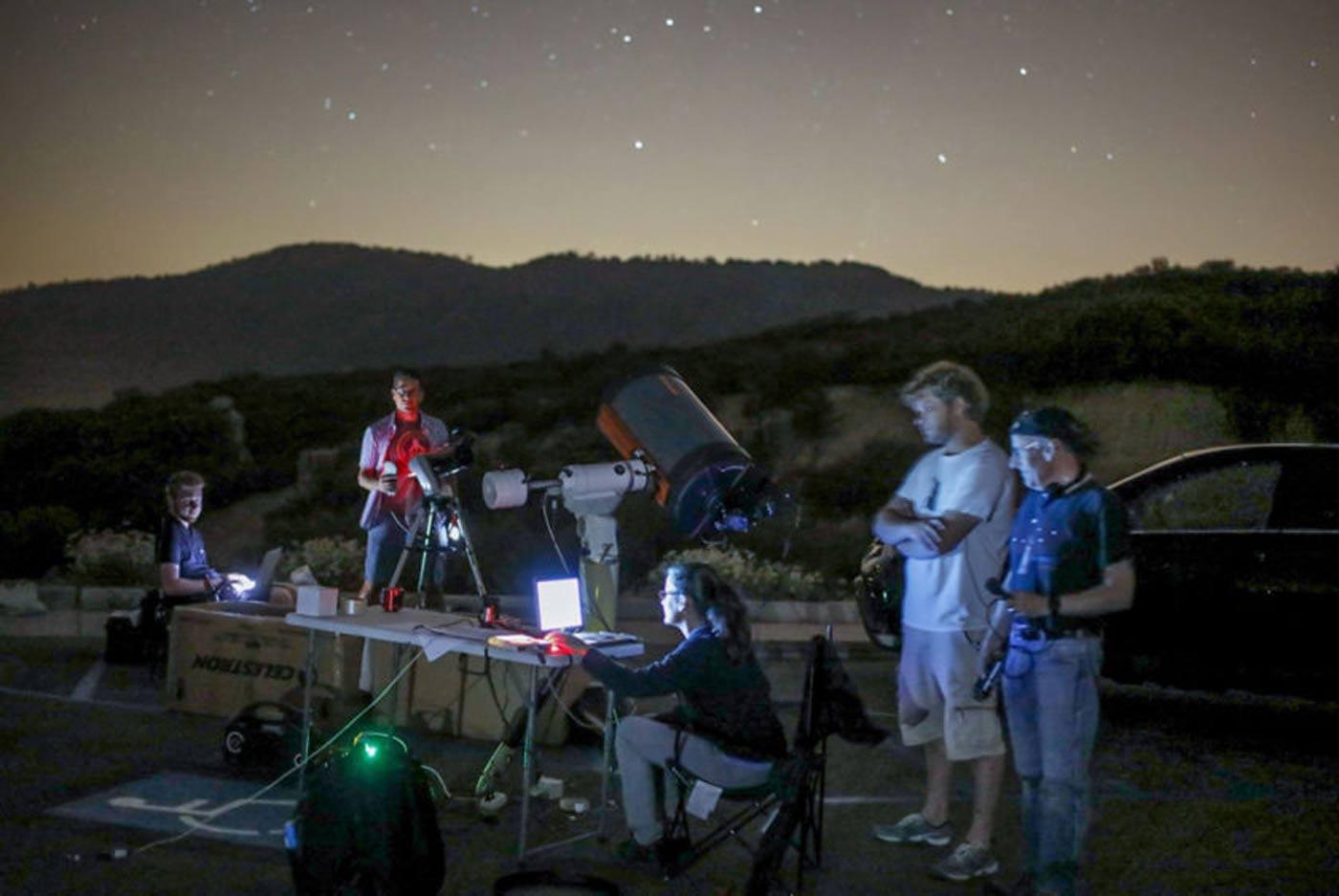
SETI Institute senior research scientist Franck Marchis was joined by Mat Kaplan, host of the Planetary Society’s Planetary Radio, on a stargazing trip to observe Pluto’s occultation. The distant dwarf planet passing in front of a star is a fairly rare occurrence that allows astronomers to learn more about the makeup of its atmosphere. For their observations, Marchis and his team used the Unistellar eVscope prototype, a small telescope which uses “Enhanced Vision” imaging technology to mimic the light gathering ability of much larger telescopes. Marchis wrote about the experience of observing the occultation through the eVscope in a piece for SETI.org:
The team of astronomers working together that night will combine all of their lightcurves to draw conclusions about the current state of Pluto’s atmosphere. But we already know that the night was a success for Unistellar in that we validated the potential of our mighty prototype to observe astronomical events.
Listen to this episode of Planetary Radio to find out what we’re learning about Pluto, and how Unistellar is bringing cutting-edge technology to the hands of amateur astronomers. You can also visit SETI.org to watch a video of the processed images taken.
- Planetary Society: Pluto Occults! Join Us on the Mountain
- SETI.org: Capturing an Occultation and a Snapshot of Pluto’s Atmosphere
- SETI.org: SETI Institute-Unistellar Partnership Promises to Revolutionize Amateur Astronomy
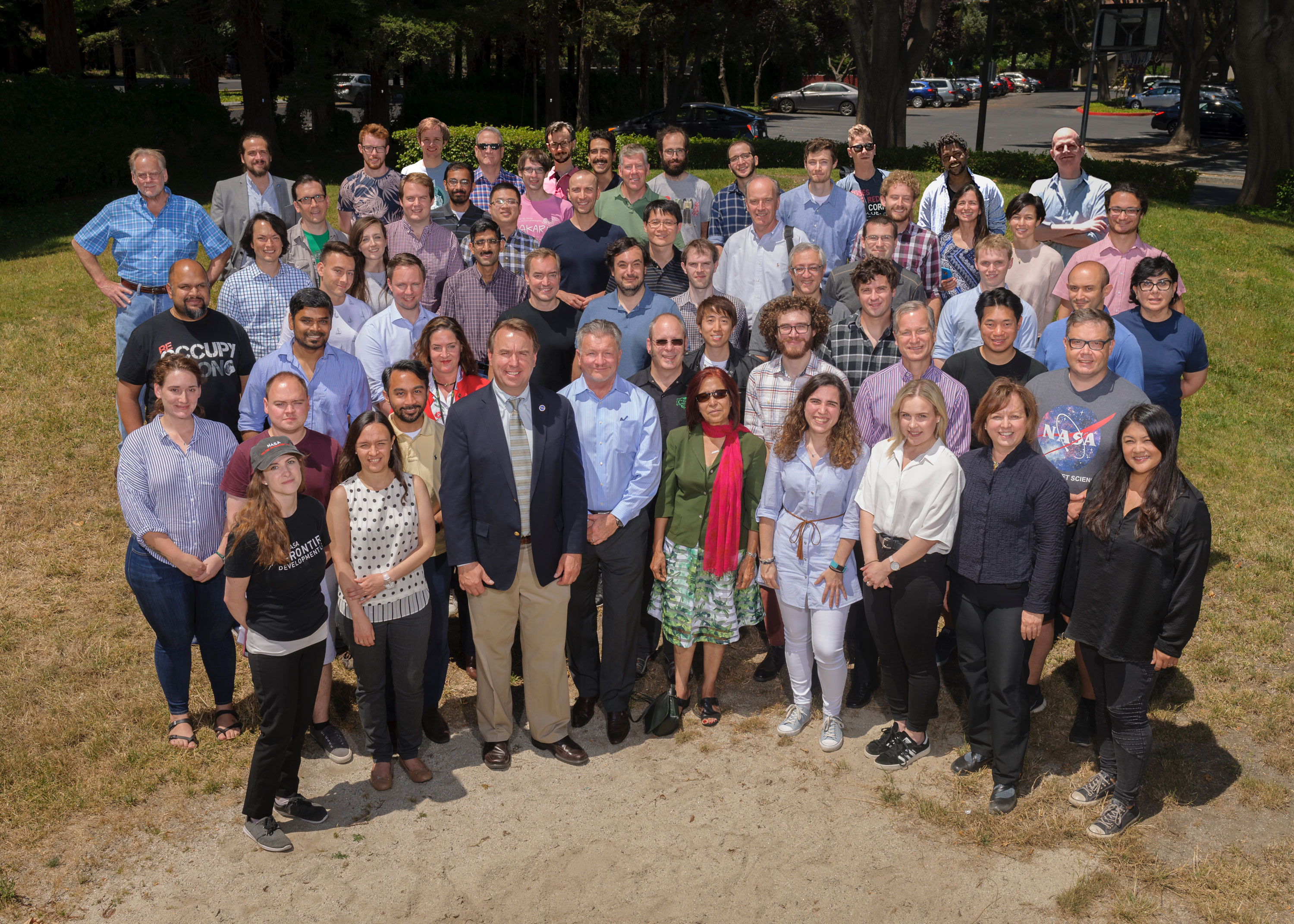 Frontier Development Lab Teams Present Results
Frontier Development Lab Teams Present ResultsFrontier Development Lab (FDL), an applied artificial intelligence research accelerator hosted by SETI Institute, recently wrapped up its 2018 activities. TNW examined one obstacle FDL teams focused on: extraterrestrial navigation. Using machine learning, two FDL teams tackled the challenge of Lunar exploration, navigation, and base-building.
You can read more about FDL on our website, SETI.org.
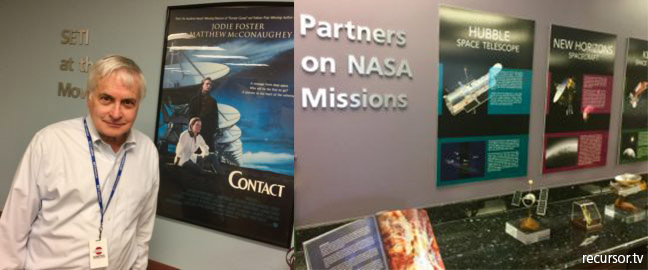
Recursor recently paid a visit to the SETI Institute’s headquarters in Mountain View, CA., to meet with senior astronomer Seth Shostak. Shostak discussed his research work with SETI and his enthusiasm for outreach:
To bring science to the public, Seth co-hosts the awesome weekly broadcast of Big Picture Science (also available as a podcast). Listening to it is a great way to stay current on the latest discoveries and debates in the hunt for alien life. Past guests have included astrobiologists, astronomers, physicists and quite a few writers like Andy Weir and filmmakers like James Cameron.
Shostak also discussed his work as a consultant on several films, and his speculations on what it might be like to make contact with ET.
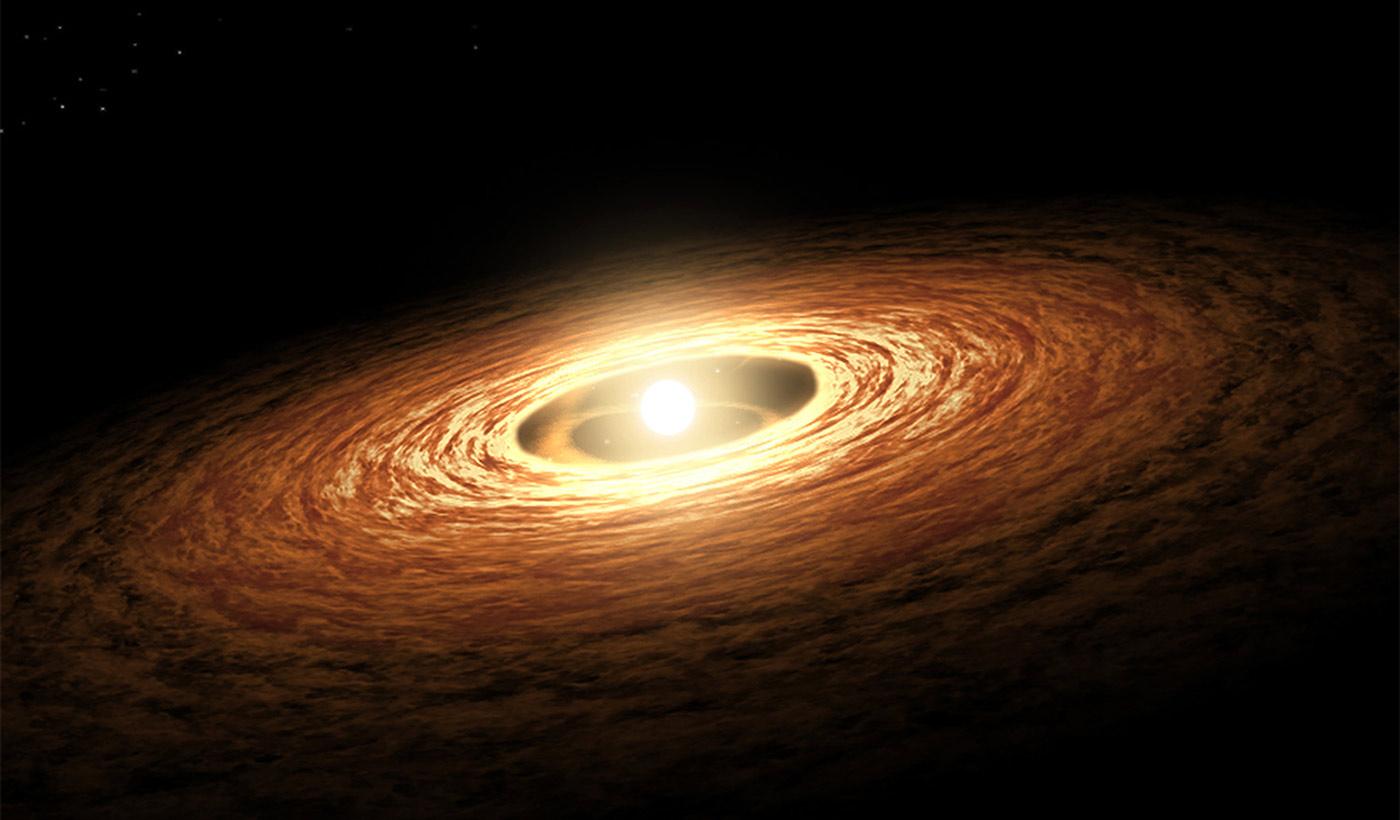 Solar System Idiosyncrasies
Solar System IdiosyncrasiesWhy aren’t there any large objects in our solar system beyond Neptune? Why do the dwarf planets, Pluto and Sedna, have such weird orbits around the sun? It turns out our solar system is a strange place, and the explanation might be a “rogue star”, according to a group of researchers headed by Susanne Pfalzner of the Max Planck Institute for Radio Astronomy. Seth Shostak, senior astronomer at the SETI Institute, summarized their findings in an article for NBC News MACH:
This passing star was an unnamed cousin of the sun, born in the cluster of stars that spawned our home star. That cluster is now dispersed, its members lost in the rich star fields of the Milky Way. But back then we had many stellar neighbors, and the researchers say this near miss took place at a distance of about 10 billion miles — a very close call in astronomical terms.
The pull of the star disrupted the formation of the outer solar system by tearing away dust and gas at the edge of the systems protoplanetary disk, according to computer simulations developed by Pfalzner’s team. Shostak noted, “today astronomers use computers as frequently as they use telescopes. And unlike the latter, computers can let us see things billions of years in our own past”.
In last week’s episode, physics is the focus, from gravitational waves to string theory, in Too Big to Prove. On our previous week’s episode, habitability is a hot topic in light of the recent discovery of a possible lake on Mars and BiPiSci explores it at length in It’s Habitable Forming.
Last week on Facebook Live, SETI Institute CEO Bill Diamond spoke with the 2018 Research Experience for Undergraduate (REU) students as they prepared for their final presentations of the summer. On our previous episode of Facebook Live, meet Carl Sagan Center Director Nathalie Cabrol and the NASA Astrobiology Team, who held their annual meeting recently at the SETI Institute’s Silicon Valley headquarters. Videos of all past Facebook Live events can be found on our Facebook page: https://www.facebook.com/SETIInstitute/
- International Astronomical Union: August 20-31, Vienna, Austria Franck Marchis, SETI Institute Senior Scientist will speak about adaptive optics and the Unistellar eVscope
- Our Journey Towards Mars: September 10, San Francisco, CA: SETI Institute scientist JR Skok will speak at the California Academy of Sciences
- Astronomical Society of the Pacific Annual Meeting: September 10-13, Rohnert Park, CA Molly Bentley, co-host of Big Picture Science, will participate in a panel discussion
- Astronomy Night: Searching for Aliens, Finding Ourselves: September 15, Mill Valley, CA Jill Tarter is the featured speaker
- Institute of Geophysics and Planetary Physics: September 28, Santa Cruz, CA SETI Institute scientist JR Skok will give a talk about the search for life in the Martian Hot Springs
- The World Above the Tetons Science Speaker Series: September 29, Teton Village, WY Jill Tarter will present Communicating Beyond Earth
- International Astronautical Conference: October 1-5, Bremen, Germany John Rummel, Senior Scientist at the SETI Institute will be chairing a session
- Maria Mitchell Women in Science Symposium: October 5-6, Wellesley, MA Jill Tarter will be a keynote speaker
- Wired 25th Anniversary Festival: October 12-15, San Francisco, CA Jill Tarter, co-founder of the SETI Institute, will take part in the festival and present "The 21st Century: The Century of Biology on Earth and Beyond."
- Fermilab Arts and Lecture Series: October 12, Batavia, IL Jill Tarter, SETI pioneer and Chair Emeritus for SETI Research at the SETI Institute will present

